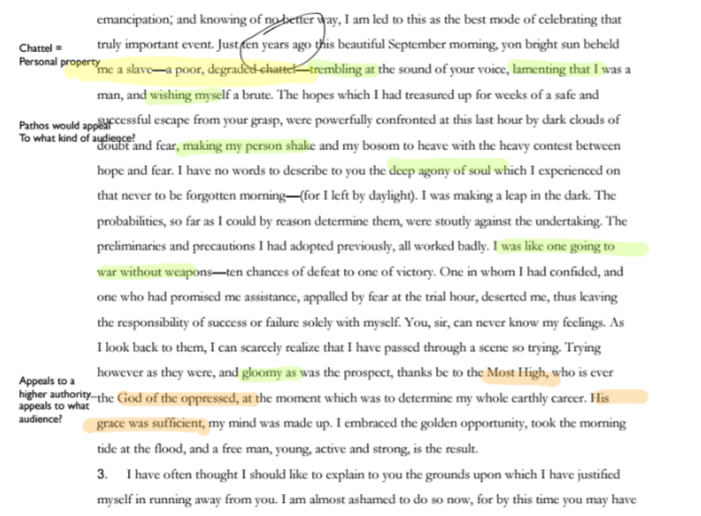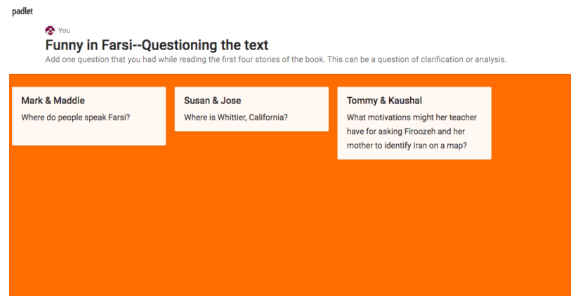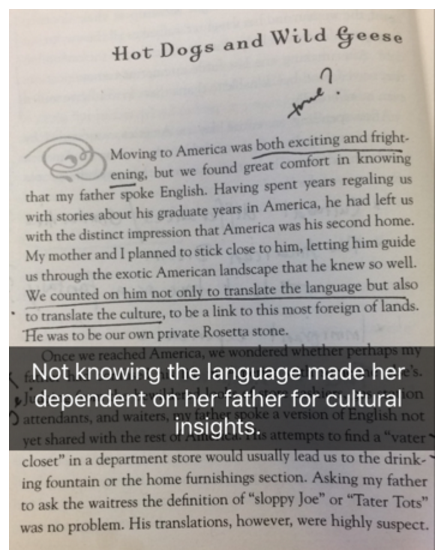In my previous post I outlined what students should be annotating for in a complex text or novel. But what about the how? Before students can get comfortable with the idea of pouring their thoughts and feelings into the margins of To Kill a Mockingbird or The Great Gatsby, they need to see a critical reader model that kind of thinking aloud and then they need a lot of practice. For some students, it’s an unfamiliar process and one that feels forced. For others, it comes naturally and they relish the ability to personalize their learning. Either way, here are some places to start and some ways to differentiate for various learners.
Project your thinking.
When my students are just grasping what annotating looks like, I model what thinking aloud looks like using a document camera. I tell them that they should write whatever they are thinking, as it occurs to them, right in the margins. However, for many students this is completely new territory, so I also give them free rein to completely copy my process until they get the hang of it. I’ll read a paragraph and then say something like “This passage right here is a great example of the power of language and how it can serve as a barrier in some cases and a bridge in others.” Then I underline the specific lines and write that exact commentary. If you don’t have access to a document camera, the app Notability is a great back up. It allows you to highlight and annotate any PDF.

Use Post-its.
Ask any of my students and they will tell you that I am the Post-it queen. In most public school classrooms, kids don’t have the luxury of writing in their own copy of a book. So if making a shameless amount of copies is a no-no at your school, students can still comment in the “margins” if they place a post-it there. It also discourages from over-highlighting. Bonus: If you need an exit ticket for the day, or a way to check in on student progress, you can ask students to post their annotations around the room, on a whiteboard or poster.
Start a Padlet.
This takes the Post-it concept and makes it a free-flowing poster — online! It does require students to use their smartphones or an electronic device, but there’s no app needed so it can be quickly implemented by plugging in a quick link. I like to ask my students to respond to a question or passage in one large document. It allows students to see what others are thinking and can reaffirm their own thoughts. It also provides lower-level students a way to see how to pump up their response by comparing it to more sophisticated comments. Also, leaving off students’ names makes it low stakes. Sometimes I will have students respond to a Padlet in place of a quiz. This not only differentiates the possibilities for them, but also lets me get a glimpse into their thinking process.


